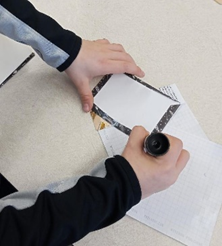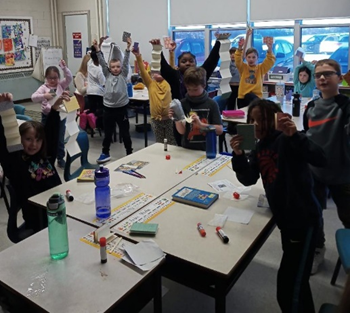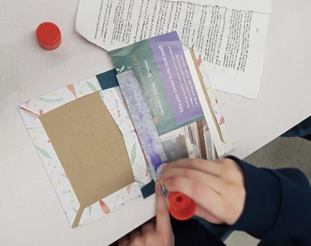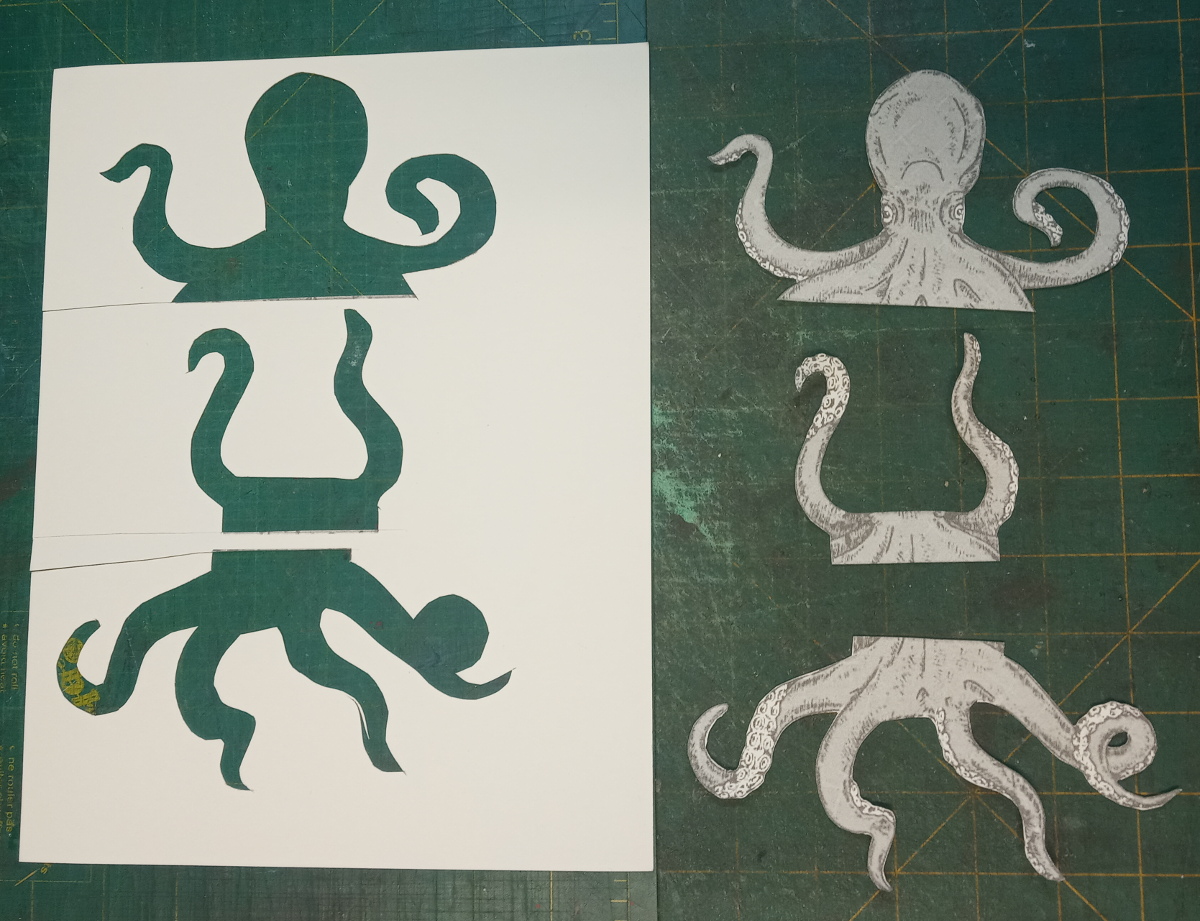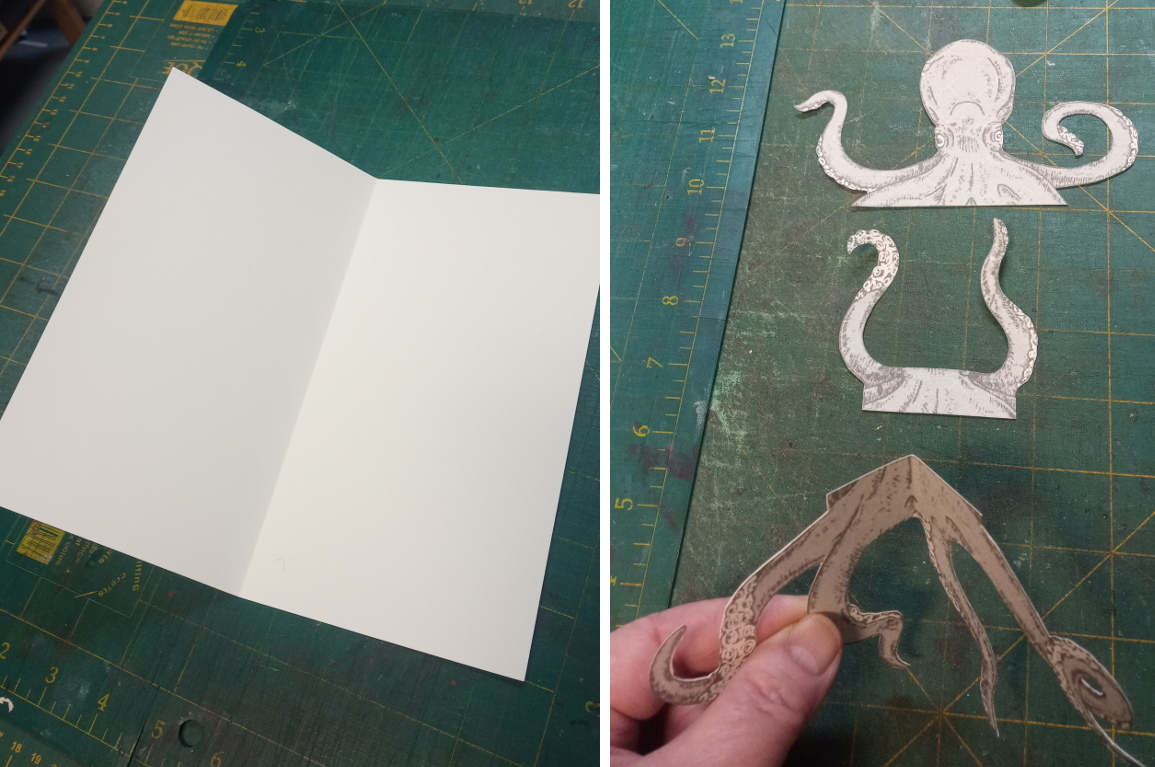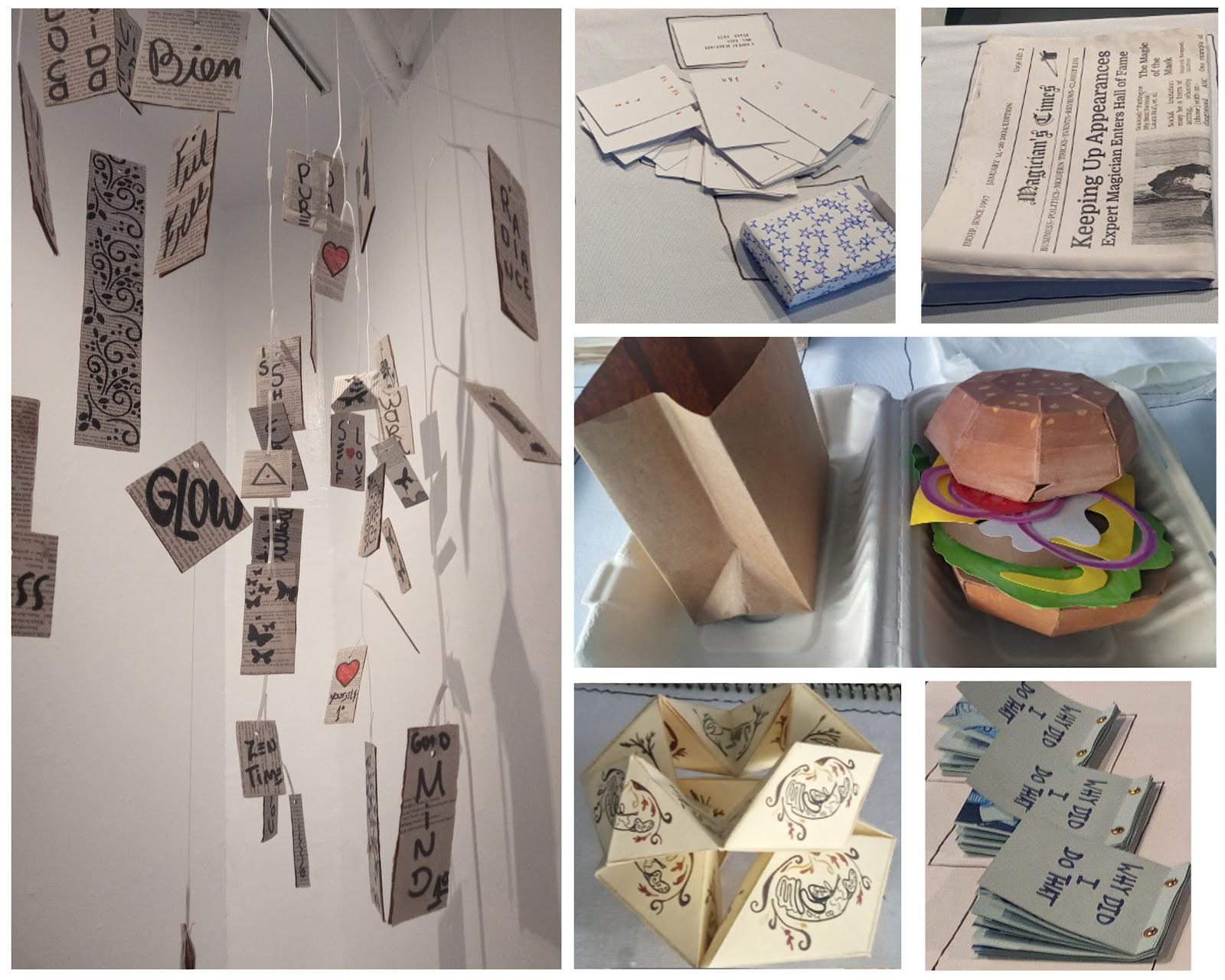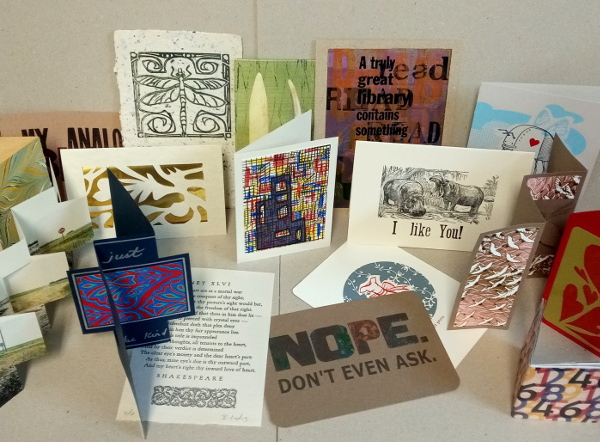By Heather Loney
A year ago, a class of Grade 2s took the first steps in bookbinding. They learned to fold paper, glue paper covers on thin book board and put together an accordion book. I learned that school glue gets EVERYWHERE.
This year, January 2024, with a class of twenty-one Grade 2/3s, we attempted accordion books again. Preparation is of key importance: 50 cover boards were cut (always a few extras for those kids who do something totally unexpected), 50 papers cut for the covers, corners trimmed and then 50 cover images drawn on the papers so kids are able to place the book board in the right spot, and 25 long strips of paper were prepared. And then, the preparations were repeated for a smaller size of accordion book. (Book sizes were determined by a collection of off-cuts from Gaspereau Press.) Paper folding was a bit of a challenge for some; I am glad that there were extra prepared papers.
With memories of wet glue dripping on desks, over books,
and on chairs, glue sticks were used to complete the work. 22 small accordion
books with cereal box covers (our prototypes) and 22 medium accordion books
with proper book boards were completed!
The following week, we attempted ‘sewing’ books. Again, preparations included cutting book board (thank you My Handbound Books for the off-cuts), paper for the signatures cut, pre-folded and pre- punched (can you imagine letting 7 and 8 year olds using a stiletto or an awl without individual supervision!), paper for covers cut, corners trimmed and drawn on to show the placement for gluing the book board, 50 end pages, along with 2 strips of book-cloth each for spines, and finally, 22 pre-threaded blunt-end needles, with a small lesson on how to pull the thread through the signature without having the needle come off the thread. We were ready!
Most of the
class followed the directions with a 5-hole pamphlet stitch with little difficulty – a few
needed one-on-one assistance (my 8 year old grand-daughter/assistant and I ran around to each group checking progress).
We fixed the signature to the hard cover using the ‘agenda book’ method that Rhonda taught in a NS Craft class last fall: the signature is sewn with a spine-wide strip of book-cloth which is then glued to the inside of the spine book-cloth on the completed covers. Colourful end pages were added for a finished product.
A class of 7 and 8 year olds proudly held up their finished sewn books and then ran around showing off their work and checking out their classmate’s books.

